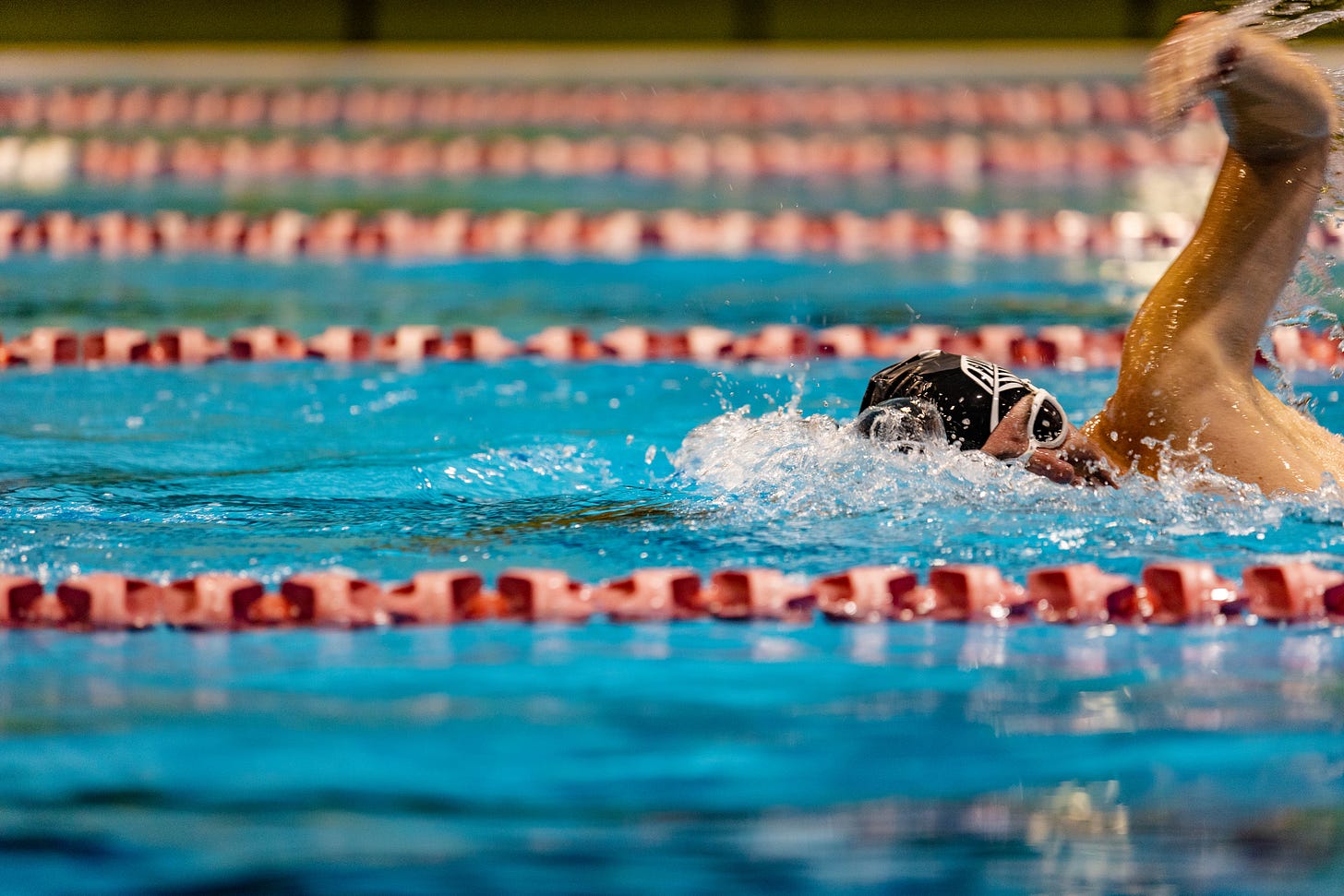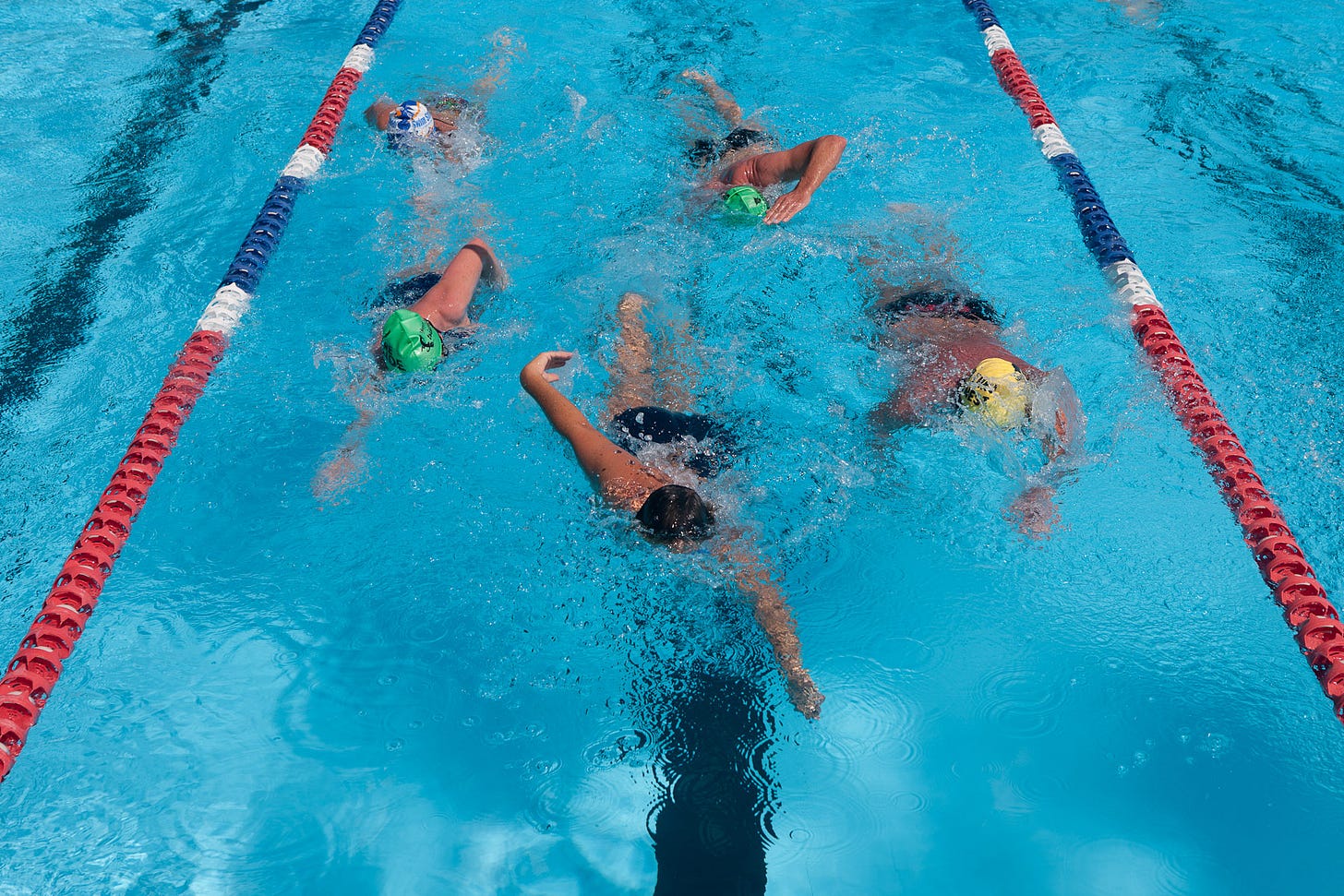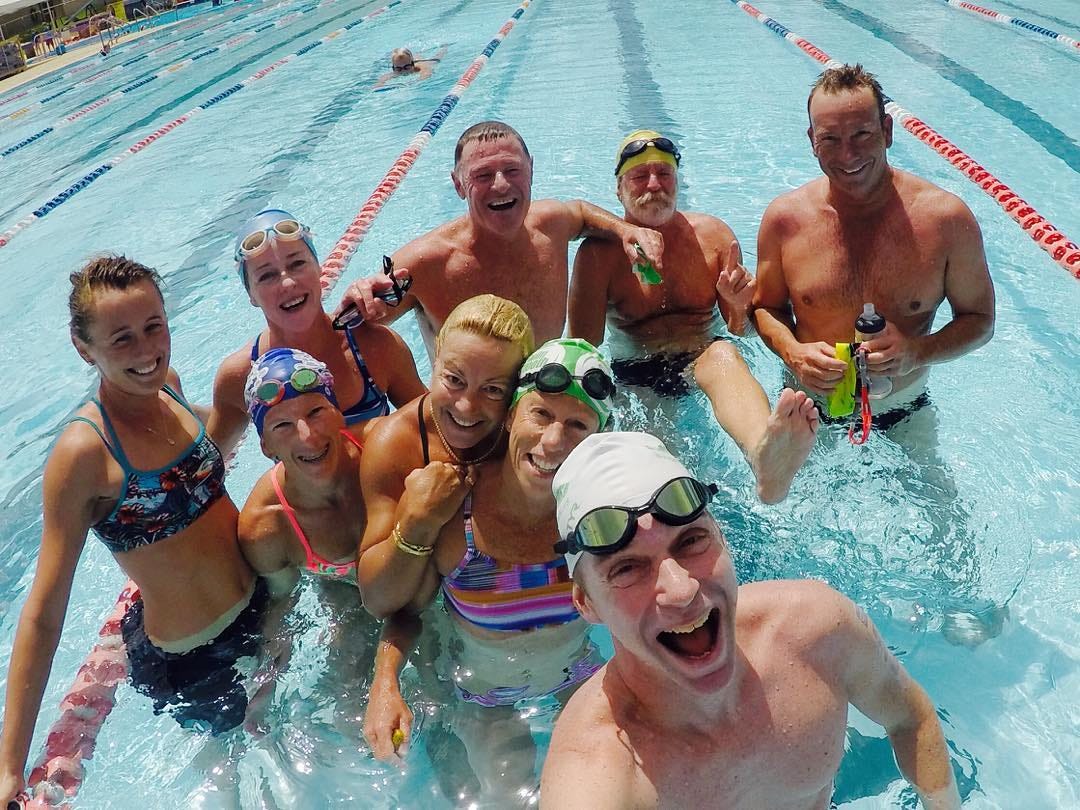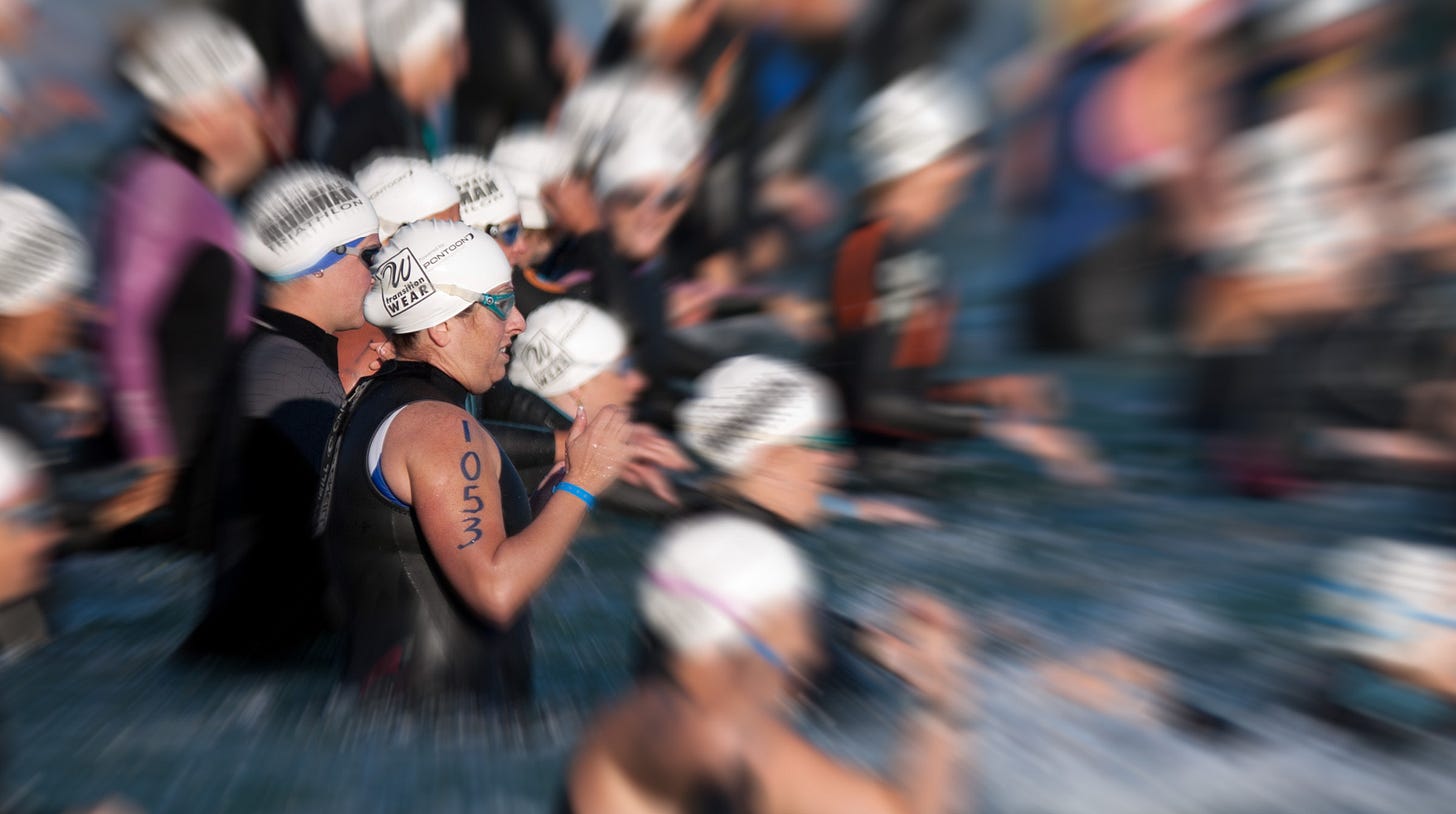Can I be a "Jack of all Trades" with My Swimming?
How to prepare for a range of distances from 50m to 5,000m this season.
Hey Swimmers,
Last week we explored the techniques that help you transition confidently into open water—skills like sighting, swimming straight, and smart drafting. But what if your season includes both pool races and long-distance events?
It’s a question we hear often:
“Can I train for both sprint and distance events at the same time?”
For many masters swimmers, the answer needs to be yes.
This week, we’re shifting gears to explore how to blend training for 50m sprints and 5km open water swims without compromising either end of the spectrum. Whether you're chasing personal bests in the pool or targeting open water races later this summer, these strategies will help you build power and stamina in perfect balance.
1. Sprint Sessions: Maintain Your Explosive Speed
Swimmers with a sprinting background often fear losing their speed when training for longer events. But with focused programming, you can absolutely preserve—and even sharpen—your power, starts, and turns while preparing for distance racing.
We recommend one dedicated sprint session every 10-14 days, done while you're fresh, to maintain top-end anaerobic fitness. The key is quality over quantity: short, fast, and purposeful efforts with full commitment.
Sample Sprint Set 1: Starts and Explosiveness
10x50m on 60s: Build each rep to 90% effort
2x200m with fins: Push hard off each wall for 15m, then cruise
4x(4x50m) on 80s:
Sets 1 & 4 from dive: alternate max effort and easy
Sets 2 & 3 from push: 25m max effort + 25m easy
Sample Sprint Set 2: Turns and Finishes
3 rounds of 10x50m + 20s rest:
Round 1: Alternate 90%/60% efforts, fast turns with no push-off
Round 2: Sprint 25m, turn, easy 25m (start/finish mid-pool)
Round 3: Dive start, controlled mid-50m, sprint to finish
Paul’s take: personally I hate sprint sets - I’ve never been very good at them, but these days I do take a little bit of masochistic pleasure from experimenting how to get my speed the highest when I’m doing these types of sessions. Funnily enough, after all my marathon swim training, I’m now as fast - if not faster - sprinting with a 2-beat kick and a really high stroke rate, than I am if I go completely to my legs.
2. Threshold Training (CSS): Boost Your Distance Speed
Critical Swim Speed (CSS) training is a cornerstone of endurance development and should be done every week; if you’re swimming 5+ times per week, you might even try two CSS sessions, so long as they’re about 72+ hours apart. These sessions target your lactate threshold—the fastest pace you can sustain aerobically—and is highly effective for racing from 400m to 5km and beyond.
These sets are tough but manageable, and they build the fitness to maintain a strong pace over long distances. The aim? Consistency from start to finish.
Sample CSS Set 1: Pacing Discipline
2 rounds of:
3x100m + 15s rest
2x200m + 20s rest
1x300m + 30s rest
Hold the same pace across all distances—start steady!
Sample CSS Set 2: Extended Endurance
2 rounds of:
100m / 200m / 300m / 400m / 500m, all with 15s rest
This is a true test of pacing—go too hard early and you'll fade.
To learn how to test your CSS pace and create custom sets, visit:
3. Open Water Skills: Practise What the Pool Doesn’t Teach
Strong pool swimmers often overlook the technical and tactical elements that define open water success. Drafting, sighting, and swimming in straight lines are critical—but require deliberate practice.
Include one skills-based session every 10-14 days to simulate the demands of open water racing. These sessions are not only fun and social but essential for race-readiness.
Sample Open Water Set 1: Drafting
8x50m + 15s rest: Single-file drafting in groups of 3–4, switch lead every 2 reps
400m: Continuous drafting, swap leaders midway
8x50m: Arrowhead formation drafting, rotate clockwise every 50m, breathe into the middle
400m: Repeat, changing leader every 100m
Sample Open Water Set 2: Sighting and Turns
500m: No-wall turns in deep water, short strokes to re-accelerate
5x100m + 20s rest: Head-up sighting every 6–8 strokes
500m: Single-file drafting with lead changes every 100m
5x100m: Deep water starts, surge into pace
The Power of Structured Variety
Many swimmers fear that shifting their training focus will compromise their strengths. But when structured correctly, a varied training plan can enhance your all-around performance.
By rotating sprint, CSS, and open water skill sessions throughout a 2-week cycle, you can maintain your explosive speed, build aerobic endurance, and sharpen the skills specific to racing in open water.
Some swimmers even find their sprinting improves as a result of threshold training and open water strength work. When your training is purposeful, efficient, and engaging, you’re more likely to see breakthroughs across all distances.
🏁 Conclusion: Sharpen Your Range Without Losing Focus
Training for both sprint and distance events can feel like walking a tightrope—but with the right weekly structure, it’s not only possible, it’s highly effective.
By applying the principles from this article—structured sprint work, disciplined threshold sets, and ongoing open water skill practice—you'll become a stronger, more versatile swimmer. In fact, many athletes find that the variety improves motivation and overall swim fitness.
Next week, we’ll build on this foundation by digging deeper into pacing strategies—because no matter the distance, how you distribute your effort can make or break your performance.
Your Coach, Paul.
Keep reading with a 7-day free trial
Subscribe to Weekly Blog by Swim Smooth to keep reading this post and get 7 days of free access to the full post archives.







